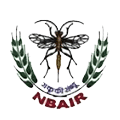-
-
Index No. It is one of the most economically important group with several species as pests of various fruits and vegetable crops. Majority of them are quarantine pests of concern across the world. Nearly 1300 described species have been placed in 51 genera and three tribes namely Dacini, Gastrozonini and Ceratitidini (Norrbom et al., 1999: Doorenweerd et al, 2018; David et al., 2014, 2016, 2017; David & Hancock, 2018). Members of tribe Dacini are brightly coloured often mimics wasps as in few species of genus Dacus, Bactrocera and Zeugodacus to escape predation. Tribe Gastrozonini are often called as Bamboo-shoot fruit flies as they are exclusively associated with bamboo as its hosts. They are brightly coloured often with colourful wing bands and well developed chaetotaxy. Tribe Ceratitidini comprise several economically important genera, represented by a single species, Ceratitella sobrina from India.
They are mainly saprophagous or very generalized phytophagous with a primitive tactile type of aculeus. They are characterized by often bar-like elongated epandrium dorsoventrally with lateral surstylus; hypandrium with lateral sclerites rudimentary, vanes of the phallapodeme articulated with anterior end of hypandrium in males and abdominal sternites 4 to 6 without anterior apodemes in case of females (Korneyev, 1999). It is divided into four tribes with 100 genera and 369 species (Norrbom et al., 1999), of which a single tribe Acanthonevrini with 18 species and 8 genera are reported from India (Agarwal and Sueyoshi, 2005, David and Ramani, 2011). Acanthonevra, Diarrhegma, Rioxa and Themara are the most common. Most species of Phytalmiinae are saprophagous, although Hardy (1986) and Permkam and Hancock (1995b) reported that species of Clusiosoma, Clusiosomina, Cheesmanomyia and Rabaulia infesting fruit of Ficus spp as well.
This is mainly associated with flower heads of Asteraceae and are found all over world with 219 genera and 1,847 described species (Norrbom et al., 1999). They are characterized by dense grey microtrichose bodies and spotted wings, absence of scapular setae, presence of fine tomentosum on the anepisternum, which makes the suture obscure and two spermathecae in females (Hardy, 1973 and 1974; Hardy and Drew, 1996). Korneyev (1999) strongly believes that it is monophyletic based on these morphological characters as well as their biology, as all of them breed in plants of Asteraceae as flower feeders, gall formers or stem miners. It is economically important with species namely Acanthiophilus helianthi (Rossi) on safflower or biocontrol agents namely, Cecidochares connexa Macquart on siam weed, Chromolaena odorata and Procedidochares utilis Stone on Eupatorium adenophorum causing stem galls (White and Elson-Harris, 1992). In India it is well represented with 34 genera and 70 species (Agarwal and Sueyoshi, 2005).
It is the smallest subfamily in Tephritidae. Biology of this group is not known fully except for an undescribed species of Bibunda reared from larvae of saturniid moth. They are characterised by the presence of short pubescent arista, oviscape opened posterodistally, 2 postpronotal lobe setae, 2 postsutural supra-alar setae and short dagger like aculeus (Korneyev, 1999). Only a single species is recorded from India in this subfamily, Ortalotrypeta isshikii (Matsumura) from Sikkim, India (David & Hancock, 2013)

